Showing Spotlights 129 - 136 of 203 in category All (newest first):
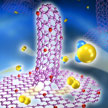 Renewable and high-capacity energy systems like fuel cells and metal-air batteries are key components in any scenario on future energy systems free of fossil fuels. The performance of fuel cells largely depends on the oxygen reduction reaction - the process that breaks the bonds of the oxygen molecules - which is substantially affected by the activity of the cathode catalyst. Researchers have now demonstrated the synthesis of a novel N-doped graphene/single-walled carbon nanotube hybrid material by a facile and cost-favorable one-step CVD method.
Renewable and high-capacity energy systems like fuel cells and metal-air batteries are key components in any scenario on future energy systems free of fossil fuels. The performance of fuel cells largely depends on the oxygen reduction reaction - the process that breaks the bonds of the oxygen molecules - which is substantially affected by the activity of the cathode catalyst. Researchers have now demonstrated the synthesis of a novel N-doped graphene/single-walled carbon nanotube hybrid material by a facile and cost-favorable one-step CVD method.
Jun 9th, 2014
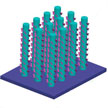 Almost all strategies for solar energy harvest and solar energy storage that exist today are developed as independent technologies. For instance, a solar cell generates electricity from the absorption and conversion of sunlight, while the storage of the produced electricity has to be implemented with another set of energy utilization solutions such as batteries/supercapacitors and fuel cells. With quite an ingenious solution, researchers have now demonstrated a hybrid, multifunctional material system that allows for simultaneous solar power generation (respectively hydrogen production), electrical energy storage, and chemical sensing.
Almost all strategies for solar energy harvest and solar energy storage that exist today are developed as independent technologies. For instance, a solar cell generates electricity from the absorption and conversion of sunlight, while the storage of the produced electricity has to be implemented with another set of energy utilization solutions such as batteries/supercapacitors and fuel cells. With quite an ingenious solution, researchers have now demonstrated a hybrid, multifunctional material system that allows for simultaneous solar power generation (respectively hydrogen production), electrical energy storage, and chemical sensing.
Jun 6th, 2014
 A new class of high-density, rechargeable batteries has the potential to address the 'range anxiety' that is inherent to current electric vehicles by drastically increasing their battery capacity: molten air batteries have up to 50 times the storage capacity of lithium-ion batteries. These batteries reversibly use oxygen from the air to store energy via a molten salt and multiple electrons stored per molecule at the counter electrode.
A new class of high-density, rechargeable batteries has the potential to address the 'range anxiety' that is inherent to current electric vehicles by drastically increasing their battery capacity: molten air batteries have up to 50 times the storage capacity of lithium-ion batteries. These batteries reversibly use oxygen from the air to store energy via a molten salt and multiple electrons stored per molecule at the counter electrode.
May 26th, 2014
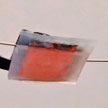 By miniaturizing microbial fuel cells, it becomes possible to build miniature energy harvesters that could power lab-on-chip or point-of-care diagnostics devices independent of any external power source. Because micro-sized microbial fuel cells utilize less electrode area and less liquid fuel volume than their macro-sized counterparts, optimizing the electrodes and the fuel sources are the most important factors in designing a micro-sized MFC for maximum power production.
By miniaturizing microbial fuel cells, it becomes possible to build miniature energy harvesters that could power lab-on-chip or point-of-care diagnostics devices independent of any external power source. Because micro-sized microbial fuel cells utilize less electrode area and less liquid fuel volume than their macro-sized counterparts, optimizing the electrodes and the fuel sources are the most important factors in designing a micro-sized MFC for maximum power production.
Mar 24th, 2014
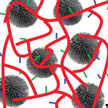 If you ever had problems with the (non-removable) battery in your iPhone or iPad then you well know that the energy storage or power source is a key component in a tightly integrated electronic device. Any damage to the power source will usually result in the breakdown of the entire device, generating at best inconvenience and cost and in the worst case a safety hazard and your latest contribution to the mountains of electronic waste. A solution to this problem might now be at hand thanks to researchers in Singapore who have successfully fabricated the first mechanically and electrically self-healing supercapacitor.
If you ever had problems with the (non-removable) battery in your iPhone or iPad then you well know that the energy storage or power source is a key component in a tightly integrated electronic device. Any damage to the power source will usually result in the breakdown of the entire device, generating at best inconvenience and cost and in the worst case a safety hazard and your latest contribution to the mountains of electronic waste. A solution to this problem might now be at hand thanks to researchers in Singapore who have successfully fabricated the first mechanically and electrically self-healing supercapacitor.
Mar 10th, 2014
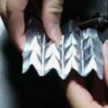 In order to fabricate entirely flexible electronic devices, the components that power them - such as batteries - not only need to be fully flexible as well but they have to be compatible with commercially available manufacturing technologies. This would require achieving a high degree of deformability without using elastomeric materials. Researchers have now demonstrated the fabrication of a highly deformable lithium-ion battery using standard electrodes and commercially standard packaging technologies.
In order to fabricate entirely flexible electronic devices, the components that power them - such as batteries - not only need to be fully flexible as well but they have to be compatible with commercially available manufacturing technologies. This would require achieving a high degree of deformability without using elastomeric materials. Researchers have now demonstrated the fabrication of a highly deformable lithium-ion battery using standard electrodes and commercially standard packaging technologies.
Feb 7th, 2014
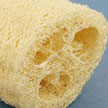 In microbial fuell cells, the anode material as the medium of electron transfer and as the support for biofilm formation is a key component that determines the effectiveness and efficiency of power generation. Generally, the anode will perform better if the anode material has a greater specific surface area and higher affinity for living bacterial cells. The direct carbonization of low-cost and naturally available materials provides a potential alternative to commercial anodes with high specific surface area. In new work, scientists demonstrate a new procedure to generate novel macroporous carbon prepared from a fibrous loofah sponge.
In microbial fuell cells, the anode material as the medium of electron transfer and as the support for biofilm formation is a key component that determines the effectiveness and efficiency of power generation. Generally, the anode will perform better if the anode material has a greater specific surface area and higher affinity for living bacterial cells. The direct carbonization of low-cost and naturally available materials provides a potential alternative to commercial anodes with high specific surface area. In new work, scientists demonstrate a new procedure to generate novel macroporous carbon prepared from a fibrous loofah sponge.
Dec 17th, 2013
 Researchers in Canada have demonstrated that it is possible to achieve graphite-like charge/discharge behavior in a sodium ion battery anodes through a controlled dilation of the intergraphene spacing in a tailored carbon. They utilized common peat moss as the carbon precursor, tuning the synthesis process to create macroscopically open nanoscale pseudographitic structures that also offers a unique high rate capability and superb charge-discharge cycling stability.
Researchers in Canada have demonstrated that it is possible to achieve graphite-like charge/discharge behavior in a sodium ion battery anodes through a controlled dilation of the intergraphene spacing in a tailored carbon. They utilized common peat moss as the carbon precursor, tuning the synthesis process to create macroscopically open nanoscale pseudographitic structures that also offers a unique high rate capability and superb charge-discharge cycling stability.
Dec 10th, 2013
 Renewable and high-capacity energy systems like fuel cells and metal-air batteries are key components in any scenario on future energy systems free of fossil fuels. The performance of fuel cells largely depends on the oxygen reduction reaction - the process that breaks the bonds of the oxygen molecules - which is substantially affected by the activity of the cathode catalyst. Researchers have now demonstrated the synthesis of a novel N-doped graphene/single-walled carbon nanotube hybrid material by a facile and cost-favorable one-step CVD method.
Renewable and high-capacity energy systems like fuel cells and metal-air batteries are key components in any scenario on future energy systems free of fossil fuels. The performance of fuel cells largely depends on the oxygen reduction reaction - the process that breaks the bonds of the oxygen molecules - which is substantially affected by the activity of the cathode catalyst. Researchers have now demonstrated the synthesis of a novel N-doped graphene/single-walled carbon nanotube hybrid material by a facile and cost-favorable one-step CVD method.
 Subscribe to our Nanotechnology Spotlight feed
Subscribe to our Nanotechnology Spotlight feed





